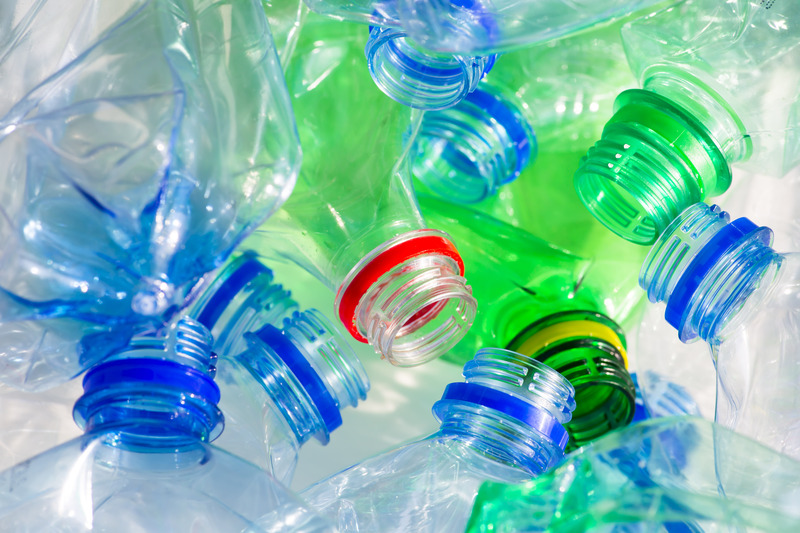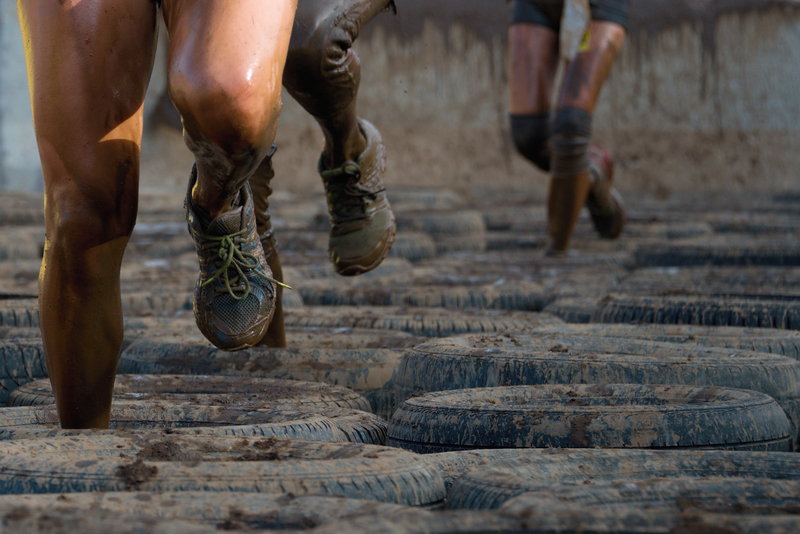Creative Upcycling for Beginners: Simple Ways to Repurpose Old Materials
Are you eager to refresh your living space, reduce your environmental impact, and embrace sustainable habits without breaking the bank? Creative upcycling for beginners offers an excellent way to transform unwanted items into beautiful, functional pieces. In this comprehensive guide, you'll discover imaginative ways to repurpose old materials, learn why upcycling matters, and explore easy DIY projects perfect for getting started!
What Is Upcycling? Understanding the Basics
Upcycling, often referred to as creative reuse, is the process of taking discarded items or waste materials and transforming them into products of higher value or quality. Unlike recycling--which breaks materials down into their base components--upcycling involves reimagining and modifying items to give them a new life and purpose.
- Reduces landfill waste by extending the life of materials
- Minimizes environmental impact versus purchasing new products
- Encourages creativity and personal expression
- Saves money through DIY solutions
Whether you're seeking to refresh your home decor, enhance your garden, or create unique gifts, creative upcycling for beginners is the perfect entry point into a more sustainable lifestyle.

Why Should Beginners Start Upcycling?
If you're new to the world of upcycling, you might wonder, "Why should I bother?" The advantages extend far beyond simple savings:
- Environmental impact: Upcycling reduces resource consumption, greenhouse gas emissions, and landfill waste.
- Customization: You can create tailored, one-of-a-kind pieces that reflect your style.
- Skill development: As you try new techniques, you'll gain hands-on DIY experience.
- Budget-friendly: Most projects require minimal investment--just creativity and time!
Starting is easier than you think. Most upcycling projects need only basic tools and materials you already have at home, making upcycling ideas for beginners accessible to everyone.
Top Materials for Beginner Upcyclers
What can you upcycle? So many things! The key is looking at common household waste with fresh eyes and imagining its potential. Here are some popular materials for simple upcycling projects:
- Glass jars and bottles: salsa jars, sauce bottles, and mason jars
- Old clothing and textiles: t-shirts, jeans, bed linens, and sweaters
- Wooden pallets and crates: shipping pallets or fruit crates
- Cardboard boxes and tubes: shoe boxes, mailing tubes, cereal boxes
- Plastic containers: yogurt tubs, milk jugs, detergent bottles
- Tin cans: soup, coffee, or veggie cans
- Furniture: old chairs, tables, or dressers
Getting Started: Tools and Safety Tips
Before diving into your beginner upcycling projects, prepare a small toolkit and follow a few basic safety tips:
- Toolkit essentials: scissors, glue, paint and brushes, screwdriver, hammer, sandpaper, safety goggles, and gloves.
- Clean your materials thoroughly before use to avoid odors and contamination.
- Ventilate your workspace when painting or using adhesives.
- Supervise children closely during crafting.
- Test items for lead paint or hazardous materials (especially if using vintage goods).
10 Simple Upcycling Ideas for Beginners
Ready to get creative? Here are 10 easy upcycling projects you can start today using materials commonly found around your home. Each project offers a blend of simplicity, creativity, and environmental benefit.
1. Glass Jar Candle Holders
Transform empty glass jars into decorative candle holders. Clean jars, add sand or pebbles for stability, and place a tea-light or small candle inside. Personalize with ribbons, paint, or decoupage for a stunning effect on tables or patios.
2. Denim Pocket Organizers
Upcycle old jeans by cutting out the back pockets. Attach them to a wooden board or canvas to create a unique wall-mounted organizer for mail, stationery, or small tools. Add hooks for keys and accessorize with buttons or patches.
3. Pallet Wood Planter Boxes
Disassemble wooden pallets (using gloves for safety) and reassemble the planks into rustic planters for herbs, succulents, or flowers. Sand and paint as desired for indoor or outdoor displays.
4. Tin Can Desk Organizers
Remove labels from empty tin cans, wash thoroughly, then decorate with paint, paper, or fabric. Arrange cans in a row or group for a customizable pen, brush, or makeup organizer.
5. T-Shirt Tote Bags
Cut the sleeves and neckline off an old t-shirt, then sew the bottom shut for an instant reusable shopping bag. No-sew versions can be made by tying the bottom with strips.
6. Cardboard Drawer Dividers
Don't toss that shoebox! Cut cardboard into strips for simple drawer organizers that corral socks, ties, or office supplies.
7. Sweater Pillow Covers
Old sweaters make cozy, textured pillow covers. Cut fabric squares, sew up three sides, insert a pillow form, and stitch shut. Use large sweaters for oversized couch cushions!
8. Milk Jug Watering Cans
Poke holes in the cap of a sturdy plastic milk jug and use it to water plants. Decorate the outside with permanent marker or stickers for a fun twist.
9. Book Page Art
Repurpose damaged or outdated books by cutting pages into shapes or strips. Create layered wall art, greeting cards, or garlands.
10. Upcycled Furniture Makeovers
Give old furniture new life with fresh paint, stencils, or new hardware. For beginners, start with a small piece like a chair or nightstand.
Pro Tips for Successful Upcycling
- Start small: Choose simple projects first to build skills and confidence.
- Work with available materials: See what's on hand before buying anything new.
- Embrace imperfections: Rustic finishes and visible brushstrokes add character.
- Learn basic techniques: Sanding, painting, sewing, and gluing go a long way.
- Get inspiration: Browse online platforms like Pinterest, Instagram, or craft blogs for upcycling project ideas.
Creative Upcycling Projects for Different Spaces
Upcycling isn't limited to decor--you can repurpose old materials throughout your home and garden:
For the Kitchen
- Glass jar food storage: Store grains, spices, and snacks in upcycled jars to reduce plastic waste.
- Utensil holders: Use decorated tin cans or ceramic cups.
For the Living Room
- Magazine racks: Repurpose wooden crates or wire baskets.
- Lamp makeovers: Update standard lamps with fabric, paint, or beaded embellishments.
For the Bedroom
- Book headboards: Attach old hardcover books to a plywood base for a literary-themed headboard.
- Drawer units: Stack painted wooden drawers for bedside storage.
For the Garden
- Planters: Use teapots, boots, or buckets as plant pots.
- Garden markers: Paint stones or repurpose wooden spoons to label your plants.
Sourcing Materials for Upcycling Projects
Not sure where to find materials for easy upcycling for beginners? Start with your own recycling or donation bins, but also consider:
- Community "freecycle" events or online swap groups
- Thrift stores and yard sales for inexpensive finds
- Curbside "trash" pickups (always sanitize items before use)
- Friends and family--let them know you're looking for old items to repurpose
Remember, upcycling is about giving discarded things a new and valuable purpose. With a little ingenuity, just about anything can be transformed!
Frequently Asked Questions (FAQs) on Upcycling for Beginners
Q: Is upcycling expensive?
A: No! Most beginner upcycling projects use inexpensive or free materials found at home. You may need to invest in some tools or supplies, but costs are usually low and offset by savings from not buying new products.
Q: Do I need advanced skills to start upcycling?
A: Not at all. Many upcycling projects for beginners require only basic skills like cutting, gluing, or painting. As you gain confidence, you can tackle more complex designs.
Q: How is upcycling different from recycling?
A: Upcycling adds value by transforming items into something better without breaking them down into raw materials. Recycling involves reprocessing materials (like melting plastics) into new items, often using more resources.
Q: Can children participate in upcycling?
A: Absolutely! Children can enjoy simple upcycling projects (like tin can planters or cardboard crafts) with adult supervision.
Q: How do I know if an item is worth upcycling?
A: Ask yourself: Can I use this differently? If you can envision a creative or useful new purpose, it's probably worth giving it a try!

Final Thoughts: Getting Creative with Upcycling
Creative upcycling for beginners isn't just a trend--it's a rewarding way to care for the planet, save money, and unlock your inner creativity. By repurposing old materials, even small changes in your daily routine can make a big impact on the environment. Remember:
- Start with easy projects--success breeds confidence!
- Use what you have before buying new supplies.
- Don't be afraid to experiment and make mistakes.
Whether you're turning jars into lanterns or t-shirts into totes, each upcycling project is a step closer to sustainable living and a more personal, eco-friendly home. So, gather your supplies, let your imagination run wild, and start creating today!
Additional Resources for Upcycling Inspiration
- Pinterest: Find upcycling boards and step-by-step tutorials
- YouTube: Watch beginners' upcycling videos for audio-visual guidance
- Earth911: Articles and ideas for upcycled crafts and sustainable living
- Upcycle That: Expert guides for creative reuse and advanced projects
Take the first step on your upcycling journey today. The possibilities are endless!
